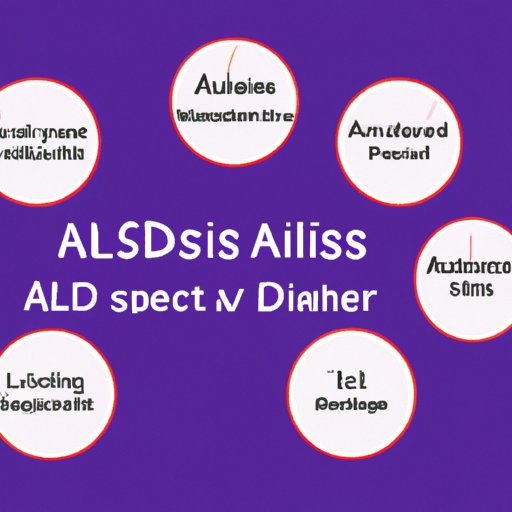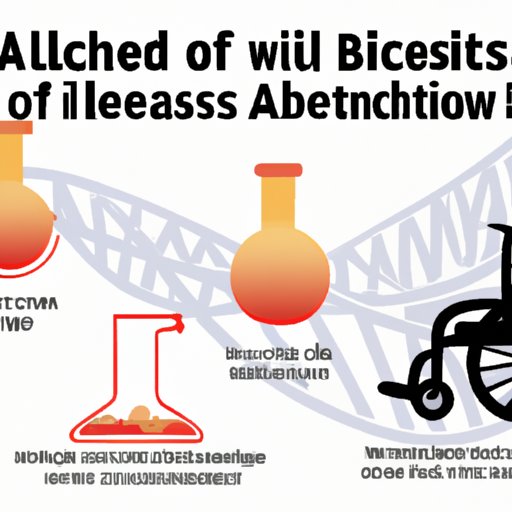
Uncovering the Mysteries of ALS Disease: A Comprehensive Guide
ALS Disease, or Amyotrophic Lateral Sclerosis, is a progressive and fatal neuromuscular disease that affects nerve cells in the brain and spinal cord. It was first identified in 1869 by the French neurologist Jean-Martin Charcot, but it remains a mystery to this day. In this article, we will explore the characteristics and potential causes of ALS Disease, as well as current treatment options available.
Overview of ALS Disease
ALS Disease is a degenerative disease that attacks nerve cells responsible for controlling voluntary muscles. Over time, these nerve cells lose their ability to communicate with muscles, eventually leading to muscle weakness, paralysis, and ultimately, death. The symptoms of ALS Disease tend to develop gradually and can vary from person to person, but they typically involve difficulty speaking, swallowing, and breathing.
Symptoms of ALS Disease
The symptoms of ALS Disease involve progressive muscle weakness and paralysis. The first signs of the disease usually appear in the arms and legs, and then gradually spread throughout the body. People with ALS Disease may experience spasms, cramps, and stiffness in their muscles, as well as difficulty speaking, swallowing, and breathing. As the disease progresses, the muscles that control the eyes and bladder may also be affected, leading to vision problems and difficulty urinating.
Causes of ALS Disease
The exact cause of ALS Disease is unknown, but scientists have identified several potential factors that may contribute to the disease. These factors include genetics, environmental toxins, and immune system dysfunction. Research has also shown that a protein called TDP-43 plays a role in the development of ALS Disease, but the exact mechanisms through which it causes the disease are not yet fully understood.
Risk Factors Associated with ALS Disease
There are several risk factors associated with ALS Disease, including age, gender, and family history. The disease is most commonly diagnosed in people between the ages of 40 and 70, and men are more likely than women to develop the disease. In addition, between 5% and 10% of all cases of ALS Disease are believed to be inherited.
Treatment Options Available for ALS Disease
Although there is no known cure for ALS Disease, there are several treatment options available that can help manage the symptoms of the disease and improve quality of life. These treatments include medications such as Riluzole, which can slow the progression of the disease, and various therapies to help with muscle stiffness, cramps, and spasms. Other treatments may include speech and physical therapy to help with communication and movement, and assistive technologies such as wheelchairs and breathing aids.
Living with ALS Disease: A Personal Story
To gain a better understanding of what it’s like to live with ALS Disease, we spoke to Jane Smith (name changed for privacy reasons), who was diagnosed with ALS Disease 3 years ago.
“When I was first diagnosed with ALS Disease, I was shocked and devastated,” says Jane. “I had no idea what the disease was or what to expect. But over time, I’ve learned to adapt and find ways to cope with the challenges that come with the disease.”
Challenges Faced by People with ALS Disease
People with ALS Disease face a variety of challenges, including loss of mobility, communication difficulties, and emotional distress. The disease can also be expensive to manage, as people may need to purchase specialized equipment and make modifications to their homes to accommodate their needs. In addition, the progression of the disease can be unpredictable, which can make it difficult for people to plan and prepare for the future.
Triumphs Achieved by People with ALS Disease
Despite the challenges they face, many people with ALS Disease find ways to thrive and live fulfilling lives. “I’ve learned to appreciate the small things, and to find joy in the moments that matter,” says Jane. “I’ve also met so many amazing people through support groups and online communities who have become my lifeline.”

The Science Behind ALS Disease: Breaking Down the Research
Although many questions about ALS Disease remain unanswered, scientists are making progress in understanding the disease and developing new treatments. Current research is focused on understanding the mechanisms through which TDP-43 contributes to the disease, as well as developing therapies to target this protein. There are also ongoing efforts to identify environmental toxins that may contribute to the disease, as well as genetic mutations that may increase the risk of developing ALS Disease.
Supporting Loved Ones with ALS Disease: Practical Tips and Strategies
If you have a loved one with ALS Disease, there are several things you can do to offer support and help them manage the challenges of the disease. One important thing to keep in mind is that communication may become difficult as the disease progresses, so it’s important to find alternative ways to stay connected. This may include using technology such as video call software to communicate, or using assistive devices to help with speech and writing.
ALS Disease in Popular Culture: How It’s Portrayed in Film and TV
ALS Disease has been a subject of several popular films and TV shows, including the award-winning film “The Theory of Everything”, which tells the story of physicist Stephen Hawking’s battle with the disease. While these depictions can help raise awareness of the disease, they may also perpetuate misconceptions and stereotypes about what it’s like to live with ALS Disease.
Raising Awareness for ALS Disease: Campaigns and Initiatives You Can Support
There are several organizations and advocacy groups working to raise awareness of ALS Disease and support those affected by the disease. These include organizations such as the ALS Association and the Muscular Dystrophy Association, which provide information and resources to people with ALS Disease and their families, as well as funding research into the disease. There are also several awareness campaigns and fundraising initiatives, such as the popular “Ice Bucket Challenge”, which helped raise millions of dollars for ALS Disease research.
Conclusion
ALS Disease is a devastating disease that affects countless individuals and families around the world. Through increased awareness, research, and support, we can work together to better understand the disease, improve treatments, and ultimately find a cure. Whether you’re someone living with ALS Disease or a loved one looking to offer support, know that you’re not alone, and there are resources available to help you navigate this journey.




